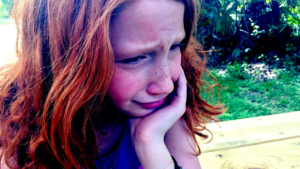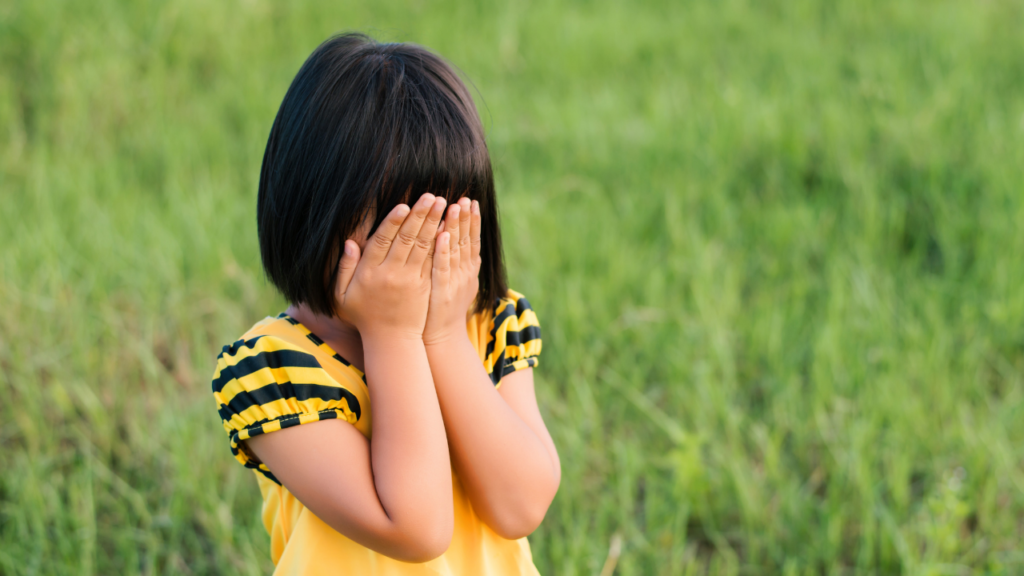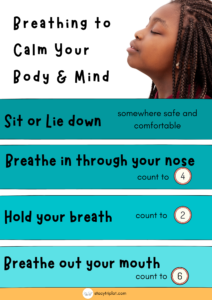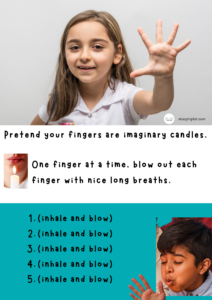 Fear and panic are real, and may feel more intense to our sensitive children. Learn how to calm a panicked child to help decrease discomfort. Many of our children rely on predictability, structure, and routine. When those change, feelings of panic may arise. Children may want to, but don’t know details of new surroundings, experience unexpected events, or get injured(scratches, to rashes, to bleeding wounds, or more extreme). Varying levels of panic and fear surface for some children because they are more intensely connected to the world around them, may be rigid thinkers who want things to stay exactly the same, are quick thinkers with over active imaginations, and/or have “super powered” (over active) sensory systems (items are louder and more intense, taxing their young systems).
Fear and panic are real, and may feel more intense to our sensitive children. Learn how to calm a panicked child to help decrease discomfort. Many of our children rely on predictability, structure, and routine. When those change, feelings of panic may arise. Children may want to, but don’t know details of new surroundings, experience unexpected events, or get injured(scratches, to rashes, to bleeding wounds, or more extreme). Varying levels of panic and fear surface for some children because they are more intensely connected to the world around them, may be rigid thinkers who want things to stay exactly the same, are quick thinkers with over active imaginations, and/or have “super powered” (over active) sensory systems (items are louder and more intense, taxing their young systems).
When our children experience fear and panic, their young brains respond in an emotional manner (we all have a “survival brain” which activates our amygdala which triggers the fight/flight/freeze behaviors). Adults have an important role in helping to calm and supporting our children while they are immersed in emotional unrest. As observers, we may not see how real the panic or fear is for the child, especially if the situation doesn’t appear extreme to our standards or based on our experiences. In order to calm a panicked child, we need to stay regulated, calm, and factual with any short comments. It is key to not involve our own judgement or emotion.
1. Use brief and concise communication.
Keep your communication as short and factual as possible when calming a panicked child. I’ve included examples for brief phrases, but use what works for your child and the situation. Also consider what the child is already aware of (what strategies do they already know?) and what common language may be used by other adults in the child’s life, so that you are communicating in terms that the child is familiar with. What words does your child’s teacher use? Share the words you’re using with other family members and those your child interacts with in the community (for example, if your child attends activities where he/she may need to use calm breathing techniques, tell the adult in charge what wording your child recognizes…and then share these free PDFs for their use!)
Download these free PDF handouts to make calm breathing and candle breathing easy!
If you want your child to calm down, try simple phrasing for previously taught calming strategies like “deep breaths“, “candle breathing“, “figure 8 breathing”, “let’s walk”, etc.
Calmly reassure your child with simple phrases like “you’re safe”, “I’m here”, or “I can help”. Stay calm, and allow for the time that the child needs. Silence is ok, and necessary.
2. Calm down the emotional brain and restore logical thinking.
When we sense fear or panic, our survival brain protects us by going into fight/flight/freeze mode. This turns off our frontal lobe, which is responsible for logical thinking. One strategy to calm our survival brain (thank you amygdala) and return to our frontal lobe, is to activate a child’s senses. You can show your child this USE YOUR SENSES PDF, or if your child responds well to verbal, try one or two of these questions (conversationally and calmly):
What do you smell?
Listen. What do you hear?
 What do you see?
What do you see?
What do you feel?
Asking the child one of these questions serves as a distraction to the thought pattern they are in. The more that the logical thinking returns, the less active the emotional reacting sticks around. As the child tunes in to his/her immediate environment, they feel more grounded and regulated. When it is time to move on to the next step, keep #3 in mind.
3. Don’t paraphrase directions or support.

Often we think that if a child doesn’t respond right away, that we should “help them” by rephrasing, repeating, or elaborating on the direction to help them understand. Don’t.
When an adult gives a direction, the direction goes in and is processed (at the child’s speed). The words are literal and meaning is being formed in the brain to make sense of the direction. IF while that processing is happening, the well intentioned adult rephrases the direction, the child’s brain sees it as a new direction, and starts the whole processing and meaning cycle over in the brain (causing a longer cycle of processing) as if it were the first time hearing it. Imagine if you were given a direction and while you were thinking about that direction ready to act on it, you were given a completely different direction, all while you are feeling overwhelmed, scared, and confused. IF you need to repeat a direction, first WAIT 15 seconds or so (depends on the child and his/her processing time), then repeat the direction EXACTLY as you did the first time in a calm and supportive manner.
Want to learn more about understanding why your child is reacting as he/she is? Join us in my stacytriplat.teachable.com course: Why Does My Child Act That Way: How Your Child’s Body Interprets Various Environments and & Simple Ways You Can Help. Use this link to receive $25 off on course enrollment, or use code: BLOG for $25 off at stacytriplat.teachable.com.





